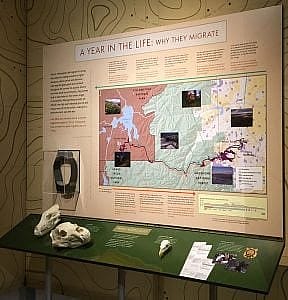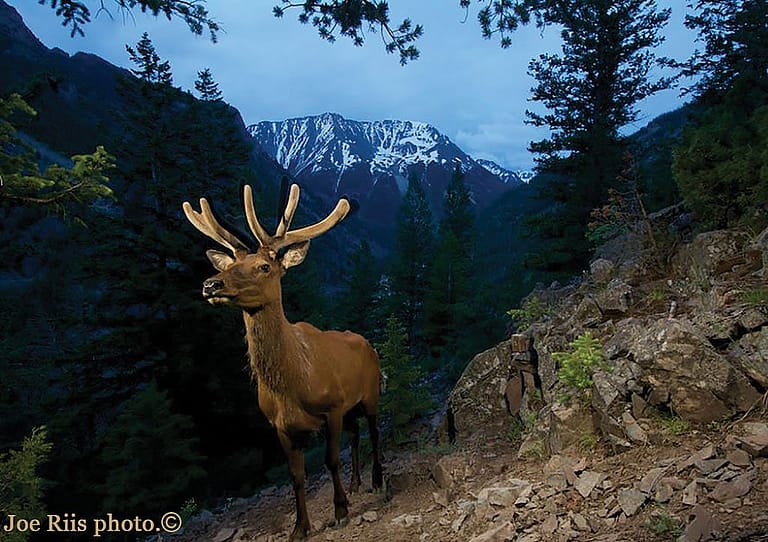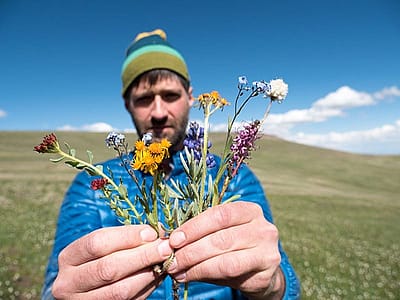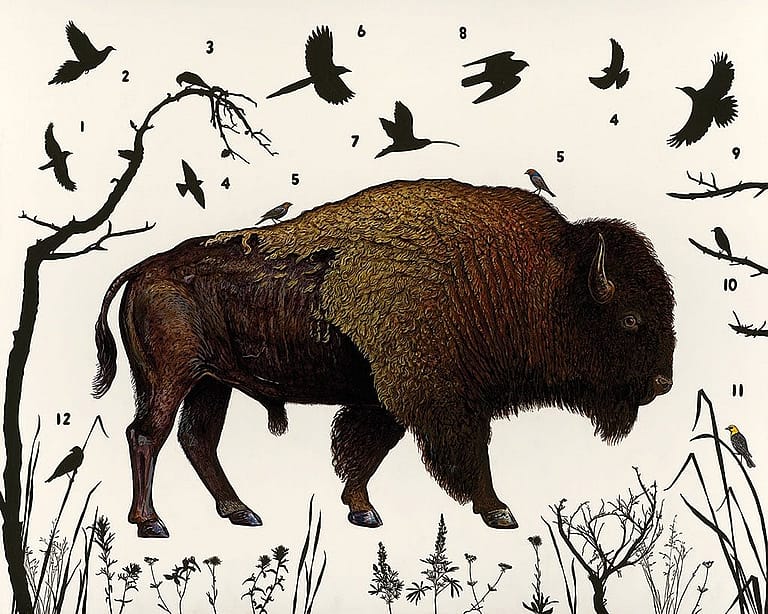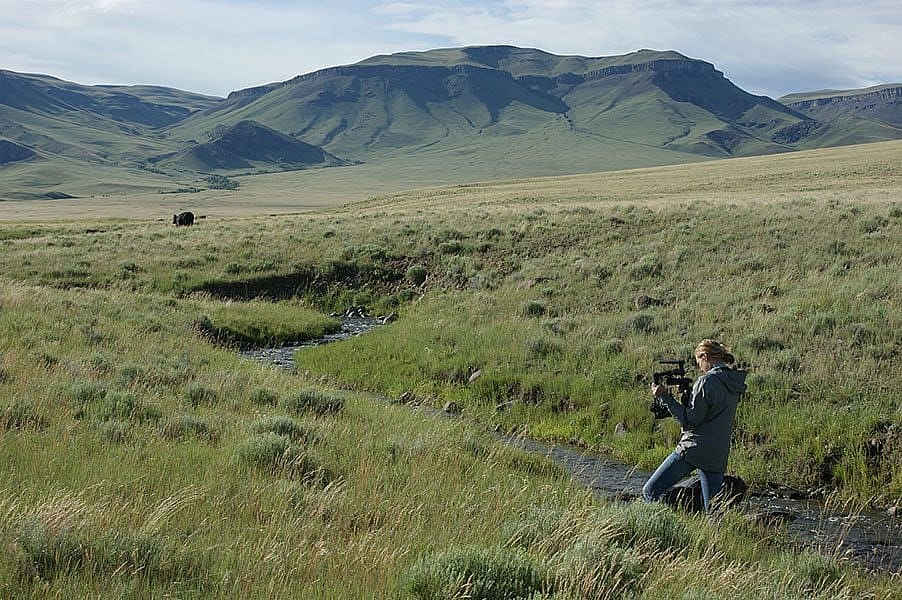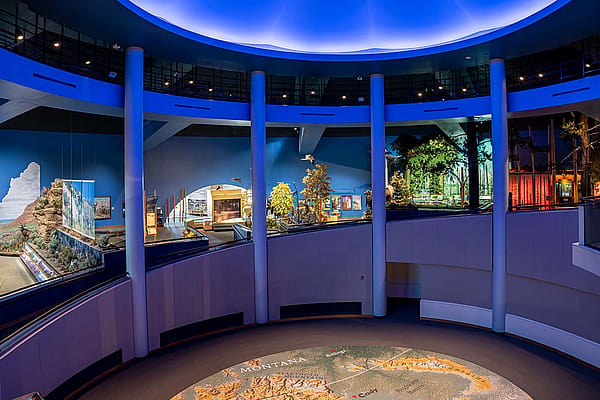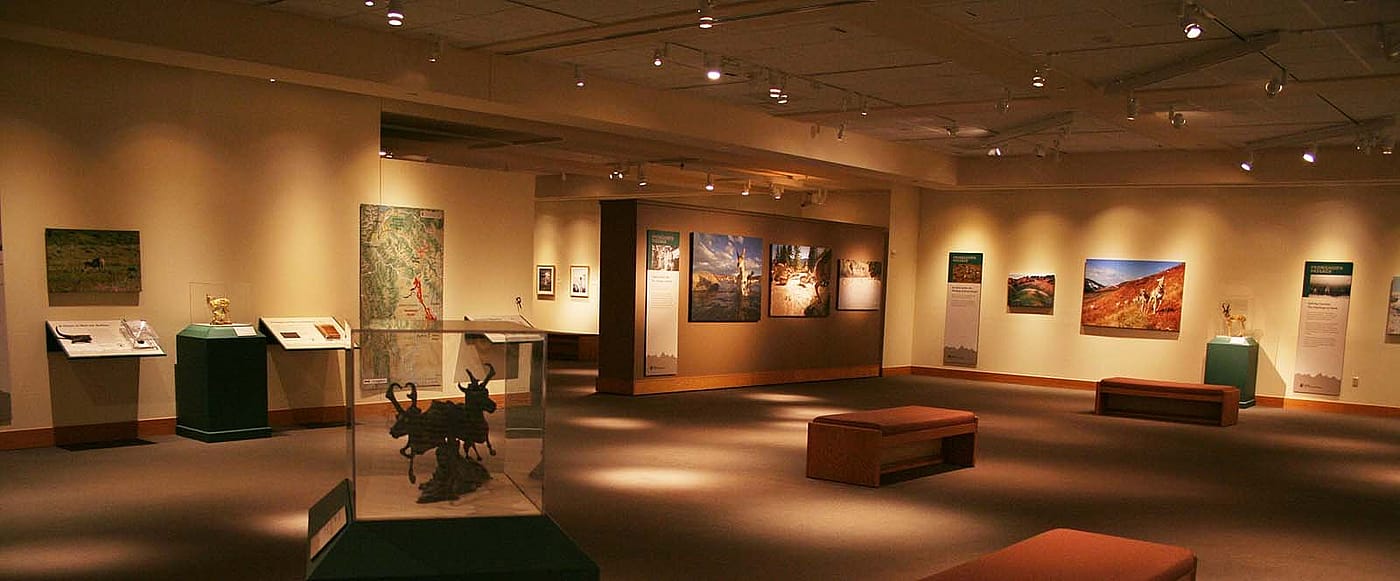
Invisible Boundaries: Exploring Yellowstone’s Great Animal Migrations
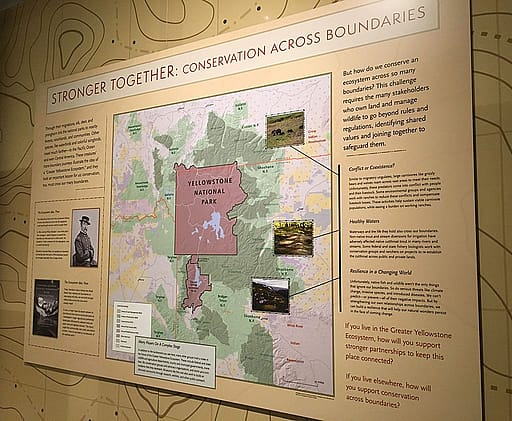
Past Exhibition
Invisible Boundaries: Exploring Yellowstone’s Great Animal Migrations
This special exhibition, now closed at the Center but traveling, focuses on the migrations of elk and other charismatic, wide-ranging wildlife in the Greater Yellowstone Ecosystem. It explores the challenges these animals face as they leave Yellowstone National Park and cross into surrounding multiple-use and private lands in search of winter resources. Their journeys link the ecosystem’s outermost foothills and ranchlands to its deepest, mountain wilderness.
The long-term conservation of Yellowstone’s migratory wildlife depends on the actions of landowners and other stakeholders far beyond national park borders. The exhibition’s three main partners—scientist Arthur Middleton, photographer Joe Riis, and artist James Prosek—collaborated to take a multi-disciplinary approach to the complex subject. Their work, along with beautiful videography by filmmaker Jenny Nichols, resulted in an exhibition that blends in-depth science, stunning imagery and film, interactive migration maps, original artwork, and much more. Invisible Boundaries tells the compelling story of animal migrations and cutting-edge conservation science in one of the world’s most renowned natural heritage sites.
INVISIBLE BOUNDARIES: Exploring Yellowstone’s Great Animal Migrations
We draw lines on maps.
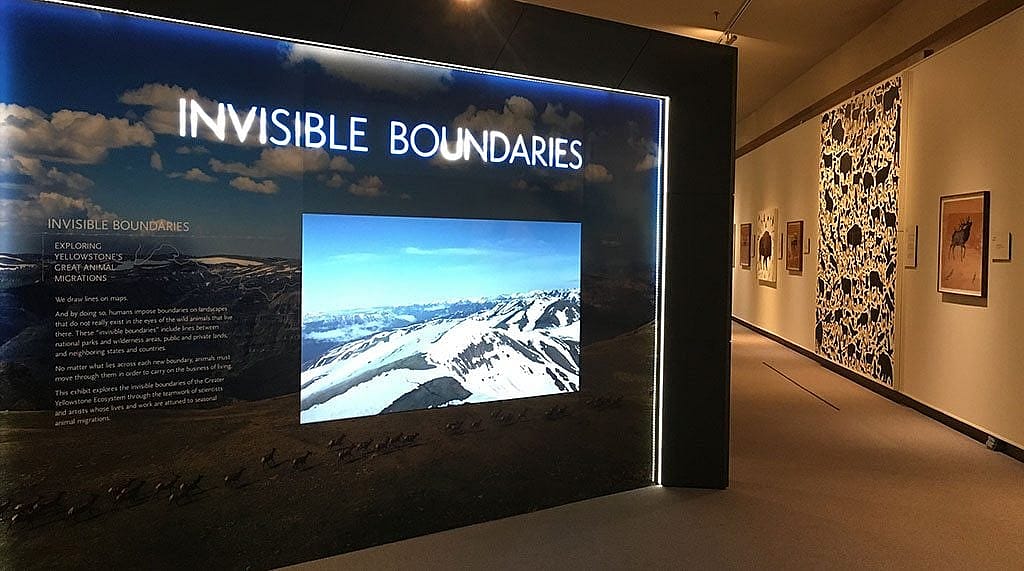
And by doing so, humans impose boundaries on landscapes that do not really exist in the eyes of the wild animals that live there. These “invisible boundaries” include lines between national park and wilderness areas, public and private lands, and neighboring states and countries.
No matter what lies across each new boundary, animals must move through them in order to carry on the business of living.
This exhibit explores the invisible boundaries of the Greater Yellowstone Ecosystem through the teamwork of scientists and artists whose lives and work are attuned to seasonal animal migrations.
While this exhibition focuses specifically on elk movements, creatures all over the world make migrations. As wildlife pass through human-influenced landscapes and waterways, they encounter many of the same difficulties as elk.
ANIMALS ON THE MOVE
They swim.
They fly.
They walk and run.
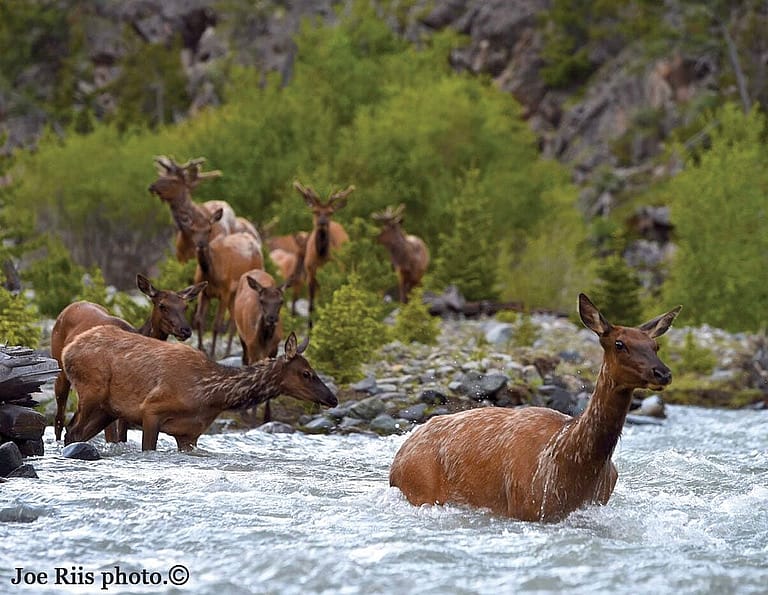
At some point in their lives, most creatures on Earth journey from one place to another. Sometimes they travel to find food, and sometimes to breed. This kind of movement—through air, under water, or over land—is called “migration.” Many animals follow the same migration route, year after year.
Snow geese, warblers, monarch butterflies, whales, sea turtles, and sockeye salmon are just a few of the animal that migrate.
Ever since we began to piece together the mystery of migration, scientists and artists alike have marveled at these feats of athleticism and beauty. These journeys fill us with awe and admiration for nature’s diversity.
Meet the scientific and artistic contributors to Invisible Boundaries
The three main partners in this exhibition—a scientist, a photographer, and an artist—came together partly because of their lifelong fascination with migrations. Arthur Middleton, Joe Riis, and James Prosek have dedicated much of their lives to discovering and sharing migration stories. We hope that those who explore the exhibition also find inspiration in these great journeys, and join together to help them continue into the future.
Arthur Middleton
Arthur Middleton, PhD, is a wildlife ecologist currently based at the Yale School of Forestry and Environmental Studies and was recently appointed Assistant Professor of Wildlife Management and Policy at the University of California, Berkeley. He is also a research associate at both the Draper Natural History Museum and the Wyoming Migration Initiative. From 2007 – 2012, while pursuing his doctorate at the University of Wyoming, Middleton studied the interactions of wolves and elk in the Absaroka Range. During this time he developed strong friendships in Cody, Wyoming, and other communities along the Absaroka Front.
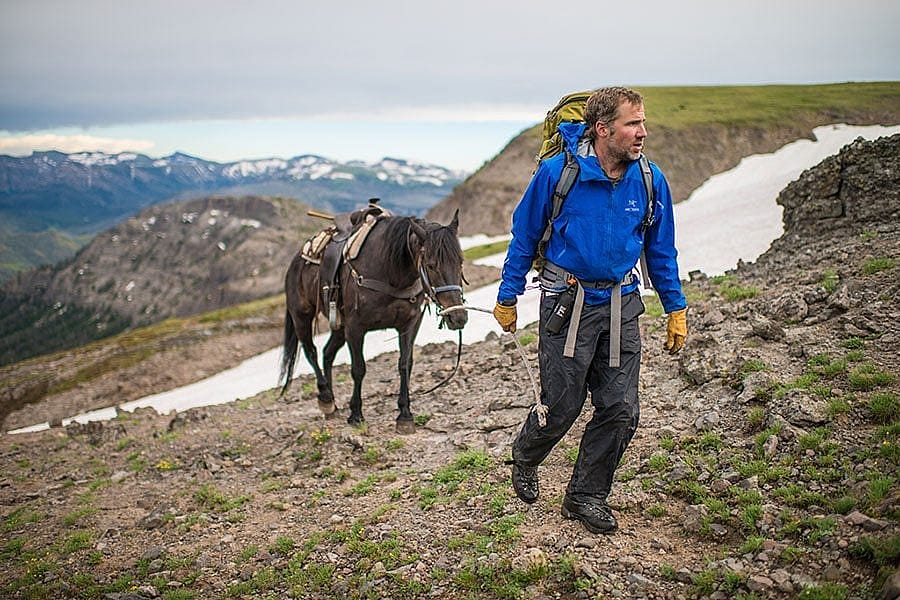
Middleton’s current research focuses on the ecology of large mammals in the mountains of North and South America. He is also dedicated to improving science communication and ecosystem-based management in the landscapes where he works. In 2014, the Prince Albert II of Monaco Foundation—in partnership with the Draper Natural History Museum and the University of Wyoming’s Biodiversity Institute—awarded Middleton and photojournalist Joe Riis the inaugural Camp Monaco Prize. The prize recognized the duo’s effort to link scientific exploration and public outreach on the wildlife migrations of the Greater Yellowstone Ecosystem.
“Science can help restore our sense of wonder,” Middleton says, “but to do that it has to be much more than words on a page.”
Joe Riis
Joe Riis is a National Geographic magazine contributing photographer and Photography Fellow at the Wyoming Migration Initiative. His work explores the migrations of animals in the Greater Yellowstone Ecosystem, highlights science and research expeditions, and connects people to some of the most remote and rare species on the planet through photography and video.

He is the recipient of several awards, including the Camp Monaco Prize (with Arthur Middleton), three National Geographic Expeditions Council grants, the Stanford Knight-Riser Award for Western Environmental Journalism (with Eileen Ostend), and Emmy Award for his work on pronghorn migration in the Great Migrations television series, and principal support from the George B. Storer Foundation. His short films in collaboration with Jenny Nichols have toured in the Banff Mountain Film Festival and Telluride Mountainfilm, among others.
By photographing “all the animals that need the freedom to roam,” Riis says, “I wish to show what is at stake.” He hopes his work encourages “a new understanding and appreciation for the larger landscape and community around our first national park.”
James Prosek
James Prosek has long been inspired by the natural world, and much of his artwork is based on closed observation of plants and animals. For the Invisible Boundaries exhibition, Prosek studied the flora and fauna of the Greater Yellowstone Ecosystem.
Prose’s painting style and subject matter might resemble the work of historical naturalists like John James Audubon, but his message is more provocative. Though he uses traditional painting techniques. Prosek tackles contemporary issues, creating works of art that make us think. He carefully arranges his plant and animal subjects to explore the hierarchies and boundaries that humans create between things in nature.
The ideas of naming and boundary-making are related. We name plants, animals, and minerals to create a common language about the world around us. We delineate boundaries on maps to formally define geographic areas. What we choose to name or not name, and where we draw lines in nature, can affect how we think about and act toward nature.
In his paintings, field sketches, and prints, Prosek extends the focus of Invisible Boundaries beyond the migrations of elk and other hoofed animals. His artwork encourages us to imagine the larger implications of human-animal relations in a changing landscapes.
Karen B. McWhorter, Scarlett Curator of Western American Art, says of Prosek’s American Bison (Wyoming): “Prosek’s paintings of wildlife paired with numbers suggest that there exists somewhere a corresponding enumerated list with the animals’ names and perhaps more information about them. But look around; this is not the case. Rather than identify the unknown animal silhouettes, Prosek encourages us to reflect on our human propensity to name and order the natural world. What prejudices and priorities might we ascribe in attempting to classify nature?”
Learn about the stand-alone exhibition, Yellowstone: Wilderness in a Box—The Art of James Prosek (January 20–June 4, 2017).
Jenny Nichols, filmmaker for the project
Jenny Nichols is a filmmaker who works to harness the power of visual media to tell stories that she believes are important. Her projects often focus on the conservation of wildlife, wild lands, and the people who care about them.
Nichols was drawn to the field project from which Invisible Boundaries grew because of the inspiration she found not only in the wildlife but in the unusual blend of people from all walks of life—from a scientist, a journalist, and an artist to the ranch owners, outfitters, agency biologists, and residents of Cody, Wyoming. She feels that the most inspiring stories involving human-wildlife interactions are those that draw on a community’s shared values while also encouraging new thinking.
Nichols has worked with National Geographic, World Wildlife Fund, New York magazine, and others to create films that have screened at Telluride Mountainfilm Festival, Banff Mountain Film Festival, DC Environmental Film Festival, Yale Environmental Film Festival, Wild & Scenic Film Festival, 5 Point Film Festival, The World Wilderness Congress, and many more.
A snippet of Nichols’s videography that appears in the exhibition.
We are most grateful to our donors and supporters for making this exhibition possible. Click here to view the list.
Invisible Boundaries is organized by the Buffalo Bill Center of the West, along with its Draper Natural History Museum and Whitney Western Art Museum, in partnership with Yale University’s School of Forestry and Environmental Studies, the Yale Institute for Biospheric Studies, University of Wyoming’s Wyoming Migration Initiative, and Split Rock Studios.
The exhibition springs from a research grant awarded to Arthur Middleton and Joe Riis through the 2013 Camp Monaco Prize under a partnership among the Prince Albert II of Monaco Foundation-USA, Buffalo Bill Center of the West’s Draper Natural History Museum, and University of Wyoming’s Biodiversity Institute.
Click here for our news release about Invisible Boundaries.
Written By
Nancy McClure
Nancy now does Grants & Foundations Relations for the Center of the West's Development Department, but was formerly the Content Producer for the Center's Public Relations Department, where her work included writing and updating website content, publicizing events, copy editing, working with images, and producing the e-newsletter Western Wire. Her current job is seeking and applying for funding from government grants and private foundations. In her spare time, Nancy enjoys photography, reading, flower gardening, and playing the flute.
